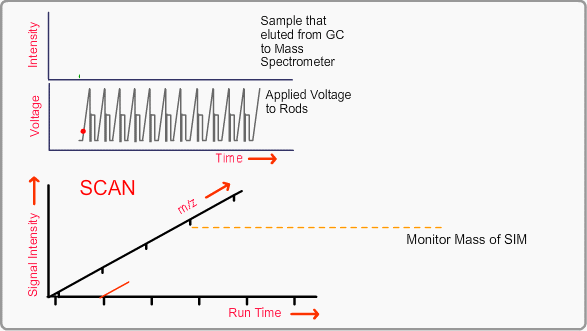Scan Mode and SIM Mode
Scan Mode and SIM Mode
You can use either scan mode or SIM mode for GC/MS analysis. The choice depends on the aim of the analysis. If you identify the sample components using a mass spectrum, scan mode is indispensable. SIM mode is suitable for quantitative analysis of trace components.When the mass spectra pf the trace components are known.
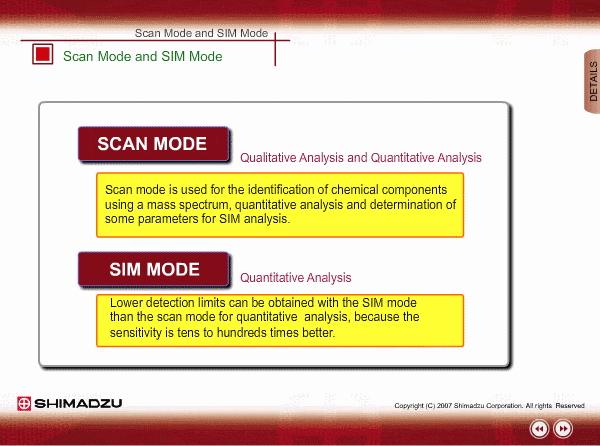
Scan Mode
Mass spectral data are acquired in sequence at specified intervals, for example 0.5 sec, by changing the voltage applied to rods. All of the measured spectra are stored in a computer to be processed.
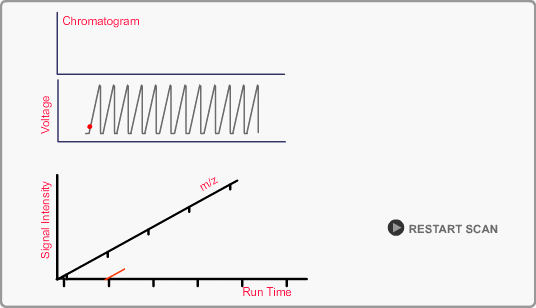
Total Ion Chromatogram (TIC)
A TIC (Total Ion Chromatogram) is a chromatogram created by summing up intensities of all mass spectral peaks belonging to the same scan. The TIC is compared to a GC chromatogram. Note that the TIC includes background noise as well as sample components.
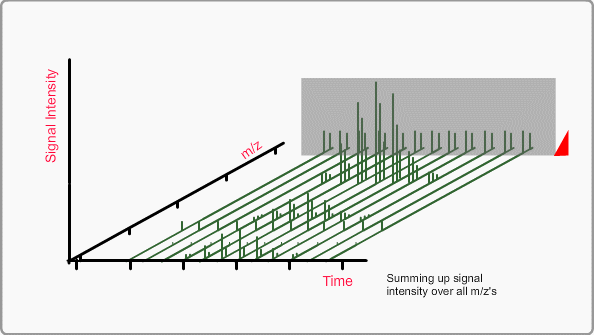
Mass Chromatogram (MC)
A MC (Mass Chromatogram) is a chromatogram for a specific mass, which is produced by connecting the spectral points of the same mass number. The figure shows the m/z 117 mass chromatogram. A MC sometimes provides us with a chromatogram of a single component in a mixed sample with less noise.
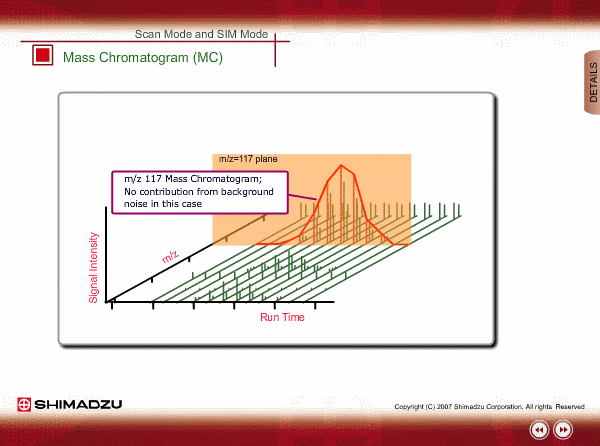
SIM Mode
In SIM mode, the mass spectrometer is set to measure only the specified mass. The SIM data appears to be same as with a MC, however, the sensitivity of SIM is tens to hundreds times higher than a MC.
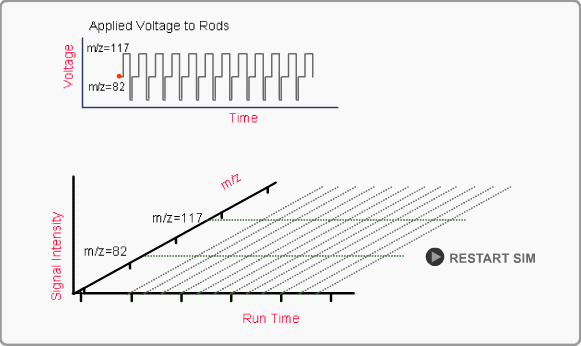
FASST (Fast Automated Scan/SIM Mode)
Using Fast Automated Scan/SIM Type (FASST), scan data and SIM data are acquired at almost the same time by fast, alternate switching between scan mode and SIM mode. Highly sensitive SIM data of FASST is useful in case traditional scan data is insufficient in sensitivity, and scan data of FASST catches the unknown compounds which are overlooked in traditional SIM mode.
